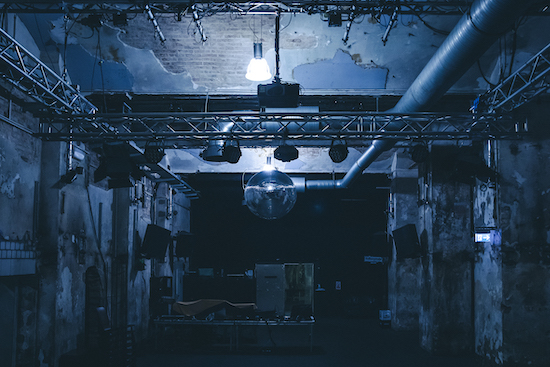All photos by Marie Staggat
EM Forster’s early twentieth-century novella, The Machine Stops opens in a hexagonal room “like the cell of a bee”. There are no musical instruments in the room, we are told, and yet “the room is throbbing with melodious sounds.” The tale offers a prescient early glimpse of a time when all music – like the furniture, communication systems, lighting, and almost everything else – are made and controlled by machinery. It also offers a peak of what might happen were all that machinery to suddenly cease its functioning, and of the “unexpected terror – silence” that ensues.
Over the last year, we have all witnessed something of that silence. It looms especially large over a new project from photographer Marie Staggat and writer Timo Stein. The date, Friday the 13th of March, the day the German government put the country on lockdown, is dubbed the “day of silence” and that “moment when everything went silent” provides the starting point for most of the interviews contained within the book.
The interviews themselves are with bar managers, club promoters, lighting engineers, bouncers, and all the people who live and work in Berlin’s nighttime economy of techno clubs and warehouse parties. Along the way, Staggat’s photography captures those spaces in their downtime, photographing the silence of some of the noisiest rooms on the planet. Roland Barthes once marvelled at the “new architecture of light” on display at Parisian nightclub, Le Palace. “Here,” he wrote in 1978, “light occupies a deep space, within which it comes alive and performs like an actor.” But Staggat captures clubs like Arena, Prince Charles, Paloma, and some 37 others with their lights mostly off, revealing forlorn spaces, cloaked in shadows and a heavy, profound silence.
Can you tell me about the origins of this book? What made you decide to put together a book about Berlin’s silenced nightlife? And how did you start to go about it, initially?
Marie: The idea came up in the first lockdown, shortly after everything had to shut down. To me it was kind of an escape after all the jobs and possibilities for artists got cancelled. My home is in the electronic music scene. I worked for Tresor almost a decade. Im photographing DJs, and artists so it was clear to start a project that keeps me busy and creative. It shows the importance of nightlife and these rooms. It does something good in the end as the proceeds will be donated to clubs that are involved. At first I wanted to only photograph the empty dance-floors, but showing the faces behind these clubs and the scene turned out to be a full concept for the book. Clubs were the first ones that had to close and they’re going to be the last ones that open again – there are so many people that lost jobs, homes, and places to feel safe and accepted.
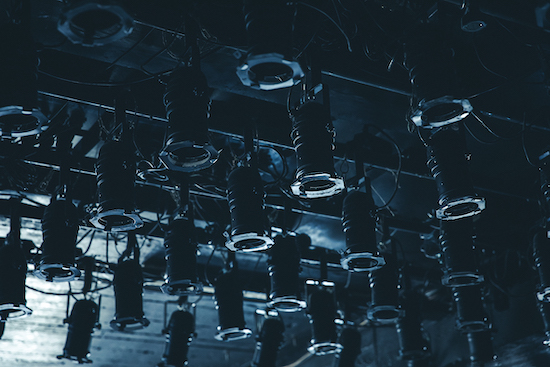
Timo: Marie came up to me after the first lockdown and told me about the idea of photographing the empty clubs. I was particularly interested in the contrast: The noisiest places in the city have turned into still lifes – almost overnight. Places that represent everything which seems incompatible with a virus: dance, sweat, proximity, loss of control.
Then, in addition to these special places, I was mainly interested in what makes them special: the people behind them. What do club people do when their concept of life is fundamentally called into question by a virus? What about the protagonists of the night who are particularly affected in such an anti-pleasure time? We wanted to make the less visible people of the crisis a little more visible: the toilet man, the bartender, the facility manager. We wanted to paint an authentic picture of the clubs and the people behind them.
In the end each club is represented by one person and their story. It was important to me to conceptualise the texts in such a way that the individual club stories work on their own, but, when read as a whole, also depict a pandemic year. So you can pick out your favourite club, but you can also read the book chronologically and learn how the people in their clubs reacted to the pandemic and the political measures in the various phases of the pandemic.
Are you both regular clubbers yourselves? How did you choose which clubs to feature? Which of the clubs in the book do you think you have each been to most often? Which feel most like ‘home’ to you? Do you remember your last night out before lockdown?
Marie: I used to be a regular clubber. I’m more a concert person now. Berlin is the hotspot for electronic music venues and my history takes places in these rooms so I wanted to focus on these clubs that play electronic music.
I think I’ve been most often to Prince Charles, Gretchen, Ipse, and Watergate – as a guest. Workwise, Tresor was my home for so many years. The last night out was a concert at Club Gretchen if I remember right – too long ago!
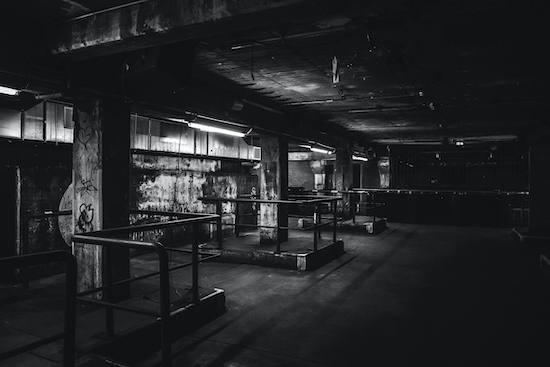
Timo: I’m actually not a regular clubber. During our club tour, one of the managers told me that there are basically two different types of people: club types and bar types. I’m more of a bar type. But you don’t have to be a clubber to be interested in these people with their special biographies, people who go through life with a lot of passion. Basically, we just collected their stories.
When selecting the clubs, we focused on techno clubs, because Berlin stands for techno and electronic music like no other city. The last night prior to the lockdown I spent in a bar in Kreuzberg. Or Neukölln? I really can’t tell exactly. What I do remember though is that a couple of singer-songwriters performed, and… We got very drunk. Better safe than sorry.
I’d like to talk a little bit about the aesthetics of the photos themselves. What kind of decisions did you make beforehand about how you would capture these places? In many cases, it seems you have relied largely on natural light, using only quite sparsely the clubs’ own lighting rigs. Why did you choose to light the spaces in this at times quite sombre way?
Marie: For me it was super important to capture everything the way it is by not staging something or creating a specific picture. I wanted it to be super authentic, and that also meant that lights had to be off as there is no party night going on. I also wanted to show some details that are famous for the club or bringing back a lot of memories for the person that goes through the book.
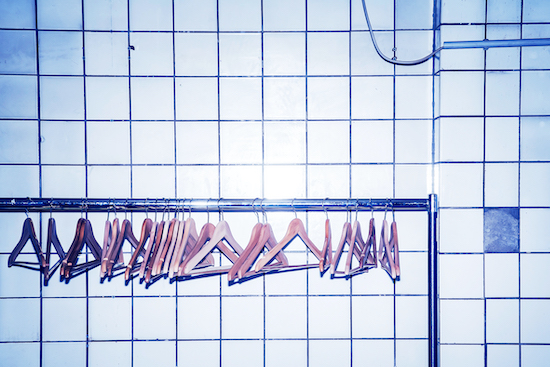
“You’ll be able to hear this crisis”
Ralf Kurzhals (37) is the master of light and sound at the club Weekend. But the coronavirus has also pulled the plug on his equipment, too. Ralf is sure that this crisis will leave a special sound behind.
Without him, everything is nothing – just silence and darkness. Lighting and sound technician Ralf Kurzhals is responsible for keeping the neon lights flashing and the beats thumping at the club Weekend. Ralf is the secret star next to the night’s official protagonists, the DJs. The 37-year-old usually stands at his small mixer panel of buttons and slides to the left of the DJ booth from 1 a.m. until the morning, making the music and emotions visible. He does this, for example, with the help of 130 white spotlights that completely cover the club’s ceiling. From his panel, he sends waves of colours via the spotlights from the dance floor to the bar and back again. He’s been doing this for two and a half years, a good 60 meters above Berlin. This is because for the past 15 years, the club Weekend has occupied the twelfth, fifteenth, and rooftop terrace floors of the second-tallest building on Alexanderplatz in Berlin-Mitte.
We meet Ralf in early July 2020 in front of the building constructed in the 1970s that served as the headquarters of the German Democratic Republic’s state travel organization during the GDR era. Socialism is long gone. The summer is depressing. The number of confirmed coronavirus cases worldwide has risen to over ten million. In Berlin, movie theatres are allowed to reopen under strict conditions. The clubs remain closed. Ralf takes us up into the club. It feels like a trip to the office. The building, the lobby, the path to the elevator – there’s little to suggest that we’re about to enter a place where hundreds of people normally party. Similar to the rest of the building, the club on the 15th floor is dominated by linear shapes, the colours black and white, as if the 80s had been hiding here for 40 years. Nine square windows cast light onto black furniture and remind us that Berlin lies 60 meters below this club. And that almost everything is beautiful when viewed from above – even Alexanderplatz. Ralf takes a seat on one of the black couches, runs his fingers through his grey beard, and lights a cigarette. A conversation about light, shadows – and the sound of the crisis.
You usually stand right next to the DJ and use light to accompany the music. Would you say you “play the light” kind of like an instrument?
Yeah, absolutely. I play on my controller as if I were playing a live set. I’ve programmed the light so that I can react manually to the beat and try to adapt the shapes and colours of the light to the drums and beats. Since I’m also a DJ myself, I know how important light can be during a DJ set. Ideally, the lighting technician and DJ form a perfect symbiosis.
What happens if you make a mistake?
Then I get annoyed with myself. Obviously I aim to perfectly time the light with the music. In the past, when you made a mistake, you noticed how instantly the energy dropped, how people dancing fell out of step. Today, things are different. People no longer notice mistakes because they’re too busy focused on themselves. This is something you can see in the club scene in general. People don’t really let themselves go anymore.
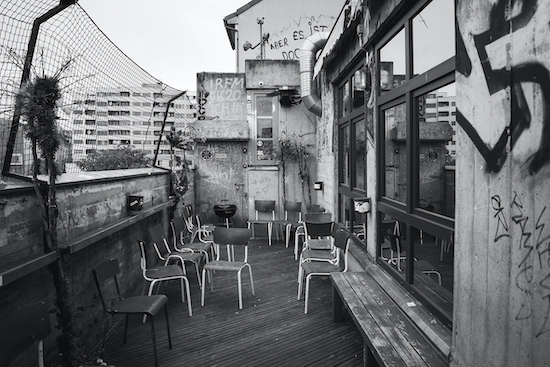
What does a light and sound engineer do in times of silence?
I produce music, and I discovered the joy of cooking. And I have a lot of time to think about the scene. I find it sad that the government is simply ignoring an entire event industry that generates billions in revenues. Obviously the politicians haven’t yet fully realized what and who is impacted by all this. All of the equipment rental companies, for example, are equally affected. No party, no renting out party equipment.
Do you consider clubs to be of systemic importance?
Absolutely. Not only that, they’re also of cultural importance. Does anyone really believe that tourists are going to come to Berlin to look at the Spree river? Without clubs, Berlin is as dead as a doornail and more boring than Bumfuck, Ohio.
Will the club sound change as a result of the coronavirus? Or, to put it another way, does this crisis have a sound?
Definitely. In ten years’ time, you’ll still be able to recognise the music produced during the crisis by its special vibe. It will become harder once again, also more political, darker, people’s fears and worries will become audible. Maybe you can compare it to the phase shortly after the fall of the Berlin Wall, when Tresor opened. This period was characterised by this particular sound, especially that of Moritz von Oswald. It will be similar with the coronavirus sound. You’ll hear it, the crisis, I’m 100% positive.
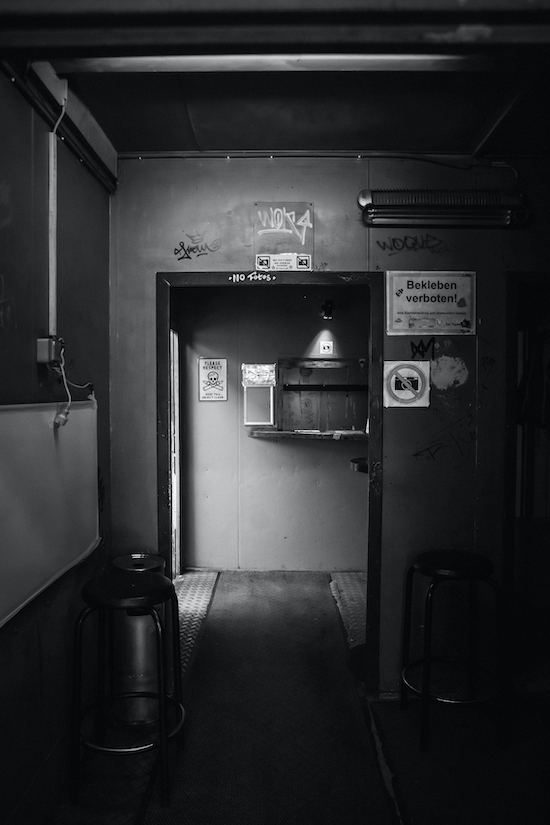
What does a perfect club night look like to you as the sound and light guy?
If you have a good talent booker and promoter who can coordinate the artists perfectly, then you have the perfect evening. And if the lighting technician is also in a good mood and joins in, then it’s the icing on the cake.
What do you miss?
The unexpected. 15 years ago, people went to the club and had no idea what was gonna happen. Today, too often, the same things are always played over and over. Too many DJs are only interested in fame and “doing it for the gram.” The DJs who prepare for eight or nine hours, specifically look for the right songs, and create a feeling of suspense that builds up dramatically, are rare nowadays. I truly hope that the crisis will also be seen as an opportunity for the scene to once again focus on the essentials and for the artistic aspect to become more important again. Many things have gotten out of hand. Like the fees that headline DJs were charging before the pandemic – they just exploded. It was completely out of whack.
HUSH – Berlin Club Culture in a Time of Silence by Marie Staggat & Timo Stein is published by Parthas Verlag

